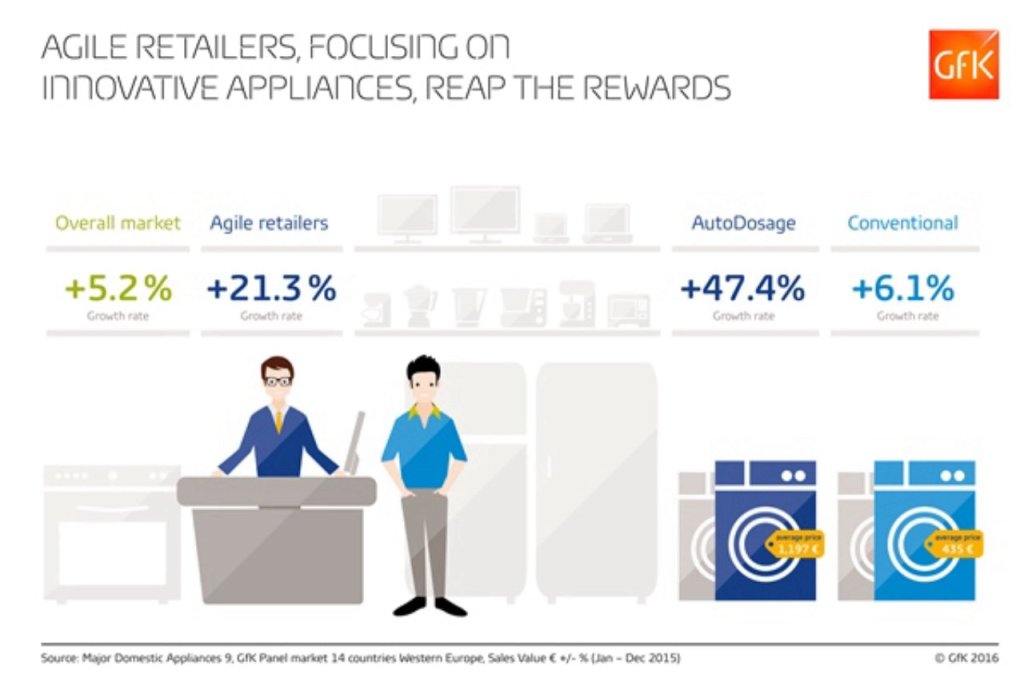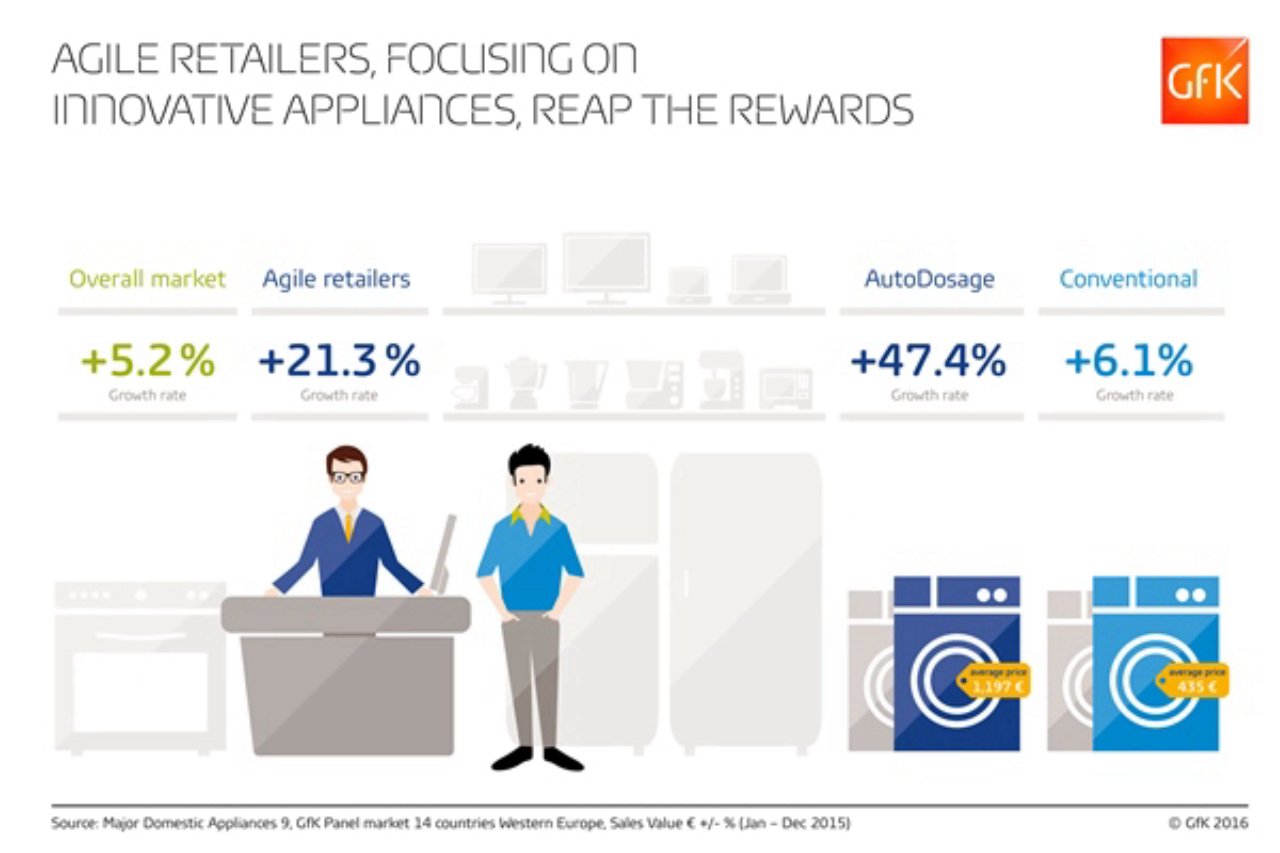Home appliances are moving beyond “smart”. Innovations in this market are not just about being connected, they are about digital intelligence that simplifies daily life. By offering consumers relevant benefits such as saving time, peace of mind and security, innovative home appliances are poised for future growth. Retailers hold the key to mass market adoption, so what should they do to encourage consumers to upgrade to appliances with state-of-the-art technologies? We found two important reasons for retailers and manufacturers to realize the growing opportunities: they must effectively communicate the trends to consumers and consistently educate them about the value of innovative devices to justify the premium price tags.
For retailers, the numbers more than add up
In economic terms, innovative appliances are an attractive proposition for retailers. Sales of auto-dosing washing machines that retail at an average price of 1,197 Euros (almost three times the cost of a conventional machine) are growing more than seven times faster than “normal” washing machines in Western Europe (47.4% compared with 6.1% for conventional machines). It’s a similar picture for other appliances where the technical features offer consumers relevant benefits; sales of self-cleaning ovens and no-frost refrigerators are growing at twice the rate of regular appliances. Where retailers can explain the benefits of innovative appliances – be that saving time, freedom from the daily domestic chores, or improved security – consumers are willing to pay more.
Agile retailers are reaping the rewards
Our research suggests that there is a strong correlation between the effort that retailers put into selling innovative appliances and the potential rewards that they can expect to make. In our 2015 study of German retailers, we discovered that “agile” retailers, who are quicker to sell new models, are much more effective at establishing both a higher sales value and volume. In 2015, among “agile” retailers, 22% of sales were for products priced in excess of 800 Euros. In contrast, “inert” retailers achieved just 16% of sales in this price bracket.
As a result, agile retailers, with a growth rate of more than 20% versus 5.2 % for the overall market, are growing their business much faster.
Retailers need to excite consumers (and to be excited themselves)
However, with sales of smart appliances representing less than 2% of market share in Western Europe in 2015, we are only at the start of the innovative appliances life cycle. As revealed in our Smart Home study, we aren’t likely to see consumers rushing out to replace all of their conventional household appliances with smart devices overnight either. This is partly because to do so would be cost prohibitive for many, but also because consumers don’t yet understand the full benefits of a home full of smart appliances. To realize the opportunities, retailers and manufacturers must share the task of communicating the trend to consumers and educating them about the value of innovative devices if they are to justify their premium price tag. We shouldn’t forget that retailers must create enough enthusiasm for the category themselves if they are to inspire consumers to trade up to these advance technological models.
Home appliances offer a number of innovations beyond smart
The starting point is to help consumers understand that this new generation of innovative home appliances aren’t merely “connected” and controllable via their devices; they offer so much more. Connected consumers need to be convinced of the bolder vision of a future where appliances with digital intelligence eliminate boring, repetitive household tasks, freeing them to enjoy their lives. If the industry can achieve this, it will be rewarded with sustainable long-term value growth.
Please email martina.sedlmaier@gfk.com to share your thoughts.





